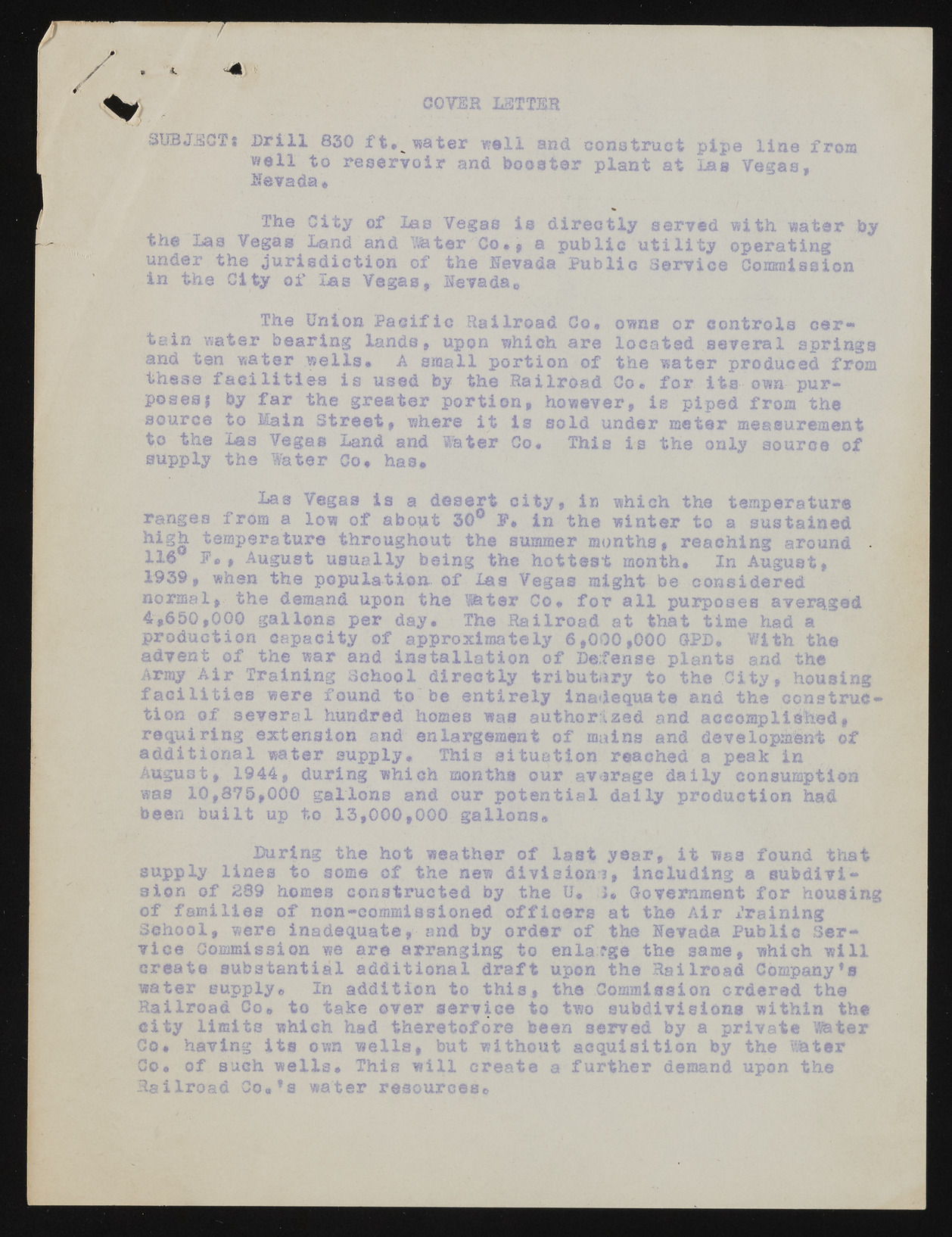Copyright & Fair-use Agreement
UNLV Special Collections provides copies of materials to facilitate private study, scholarship, or research. Material not in the public domain may be used according to fair use of copyrighted materials as defined by copyright law. Please cite us.
Please note that UNLV may not own the copyright to these materials and cannot provide permission to publish or distribute materials when UNLV is not the copyright holder. The user is solely responsible for determining the copyright status of materials and obtaining permission to use material from the copyright holder and for determining whether any permissions relating to any other rights are necessary for the intended use, and for obtaining all required permissions beyond that allowed by fair use.
Read more about our reproduction and use policy.
I agree.Information
Digital ID
Permalink
Details
More Info
Rights
Digital Provenance
Publisher
Transcription
COVER JL8TTER SUBJECT. D rill 830 ft* water well and construct pipe line from well to reservoir and booster plant at Las Vegas, N e v a d a * The City of las Vegas is d irectly served with water by the Las Vegas Land and \!<ater Co*, a public u t ilit y operating under the Jurisdiction of the Nevada Public Service Commission in the City o f Las Vegas, Nevada* The Union P a cific Railroad Co* owns or controls ce rtain water bearing lands, upon which are located several springs and ten water wells* A small portion of the water produced from these f a c il i t i e s is used by the Railroad Go* fo r it s own purposes? by fa r the greater portion , however, is piped from the source to Main S treet, where it is sold under meter measurement to the Las Vegas Land and Water Co* This is the only source of supply the la te r Co, has* Las Vegas is a desert c it y , in which the temperature ranges from a low of about 30° P* in the winter to a sustained high temperature throughout the summer months, reaching around . 116 F«, August usually being the h ottest month* In August, 1939, when the population" of Las Vegas might be considered normal, the demand upon the lbter Co* fo r a ll purposes averaged 4,650,000 gallons per day. The Railroad at that time had a production capacity of approximately 6,000,000 GPB, With the advent of the war and in sta llation o f Defense plants and the Army A ir Training School d irectly tributary to the C ity, housing f a c ilit ie s were found to be entirely inadequate and the construction o f several hundred homes was authorized and accomplished, requiring extension and enlargement of mains and development of additional water supply* This situation reached a peak in August, 1944, during which months our average daily consumption was 10,875,000 gallons and our poten tial daily production had been b u ilt up to 13,000,000 gallons* During the hot weather of last year, i t was found that supply lines to some of the new d iv ision s, including a subdivision of 289 homes constructed by the U* 3» Government fo r housing o f fam ilies o f non-commissioned o ffic e r s at the Air Training School, were inadequate, and by order of the Nevada Public Serv ice Commission we are arranging to enlarge the same, which w ill create substantial additional draft upon the Railroad Company’ s water supply* In addition to th is , the Commission ordered the Railroad Co* to take over service to two subdivisions within the city lim its which had theretofore been served by a private isater Co* having it s own w ells, but without acquisition by the ^ater Co* of such wells* This w ill create a further demand upon the Railroad Go* ¥s water resources*

